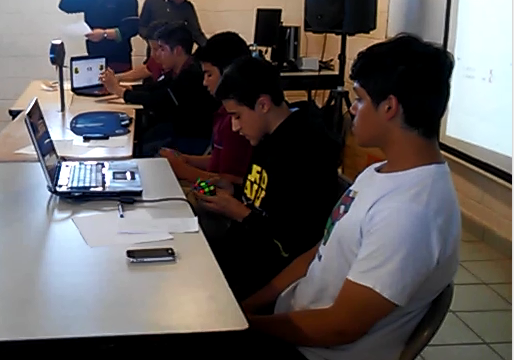The YJ Wheel cube is
a 3x3x3 modification that shape-shifts really amazing. It’s very similar to a 3x3x3 Fisher cube but this one only has 4 pieces from each side.
The basic concept of
the cube:
The YJ Wheel cube is a 3x3x3 modification which shape-shifts really amazing. It’s very similar to a 3x3x3 Fisher cube but this one only has 4 pieces from each side.
The basic concept of the cube:
 As I previously said, this is a cubic 3x3x3 modification, but it’s reduced to 2 centers, because the other 4 act like edges and have an specific orientation. You can easily solve this cube with beginners’ method, but CFOP is a little bit hard to execute.
As I previously said, this is a cubic 3x3x3 modification, but it’s reduced to 2 centers, because the other 4 act like edges and have an specific orientation. You can easily solve this cube with beginners’ method, but CFOP is a little bit hard to execute.
The cube has really standard stickers and it turns really nice. The only problem that I see to it is that when it’s scrambled, is a little bit harder to execute fluid algorithms because of the shape-shifting. Something I’d like to mention is that it’s a little hard to correctly align all the faces of the cube; therefore, you will sometimes have some lockups.
It’s not a hard cube but I recommend it only to have it as an item to your collection, it’s like a Fisher cube but I’m really sure that you can have a good time with it. If you want to buy it, I will leave links bellow and a tutorial of how to solve it.
Buy it here:
Tutorial:





























